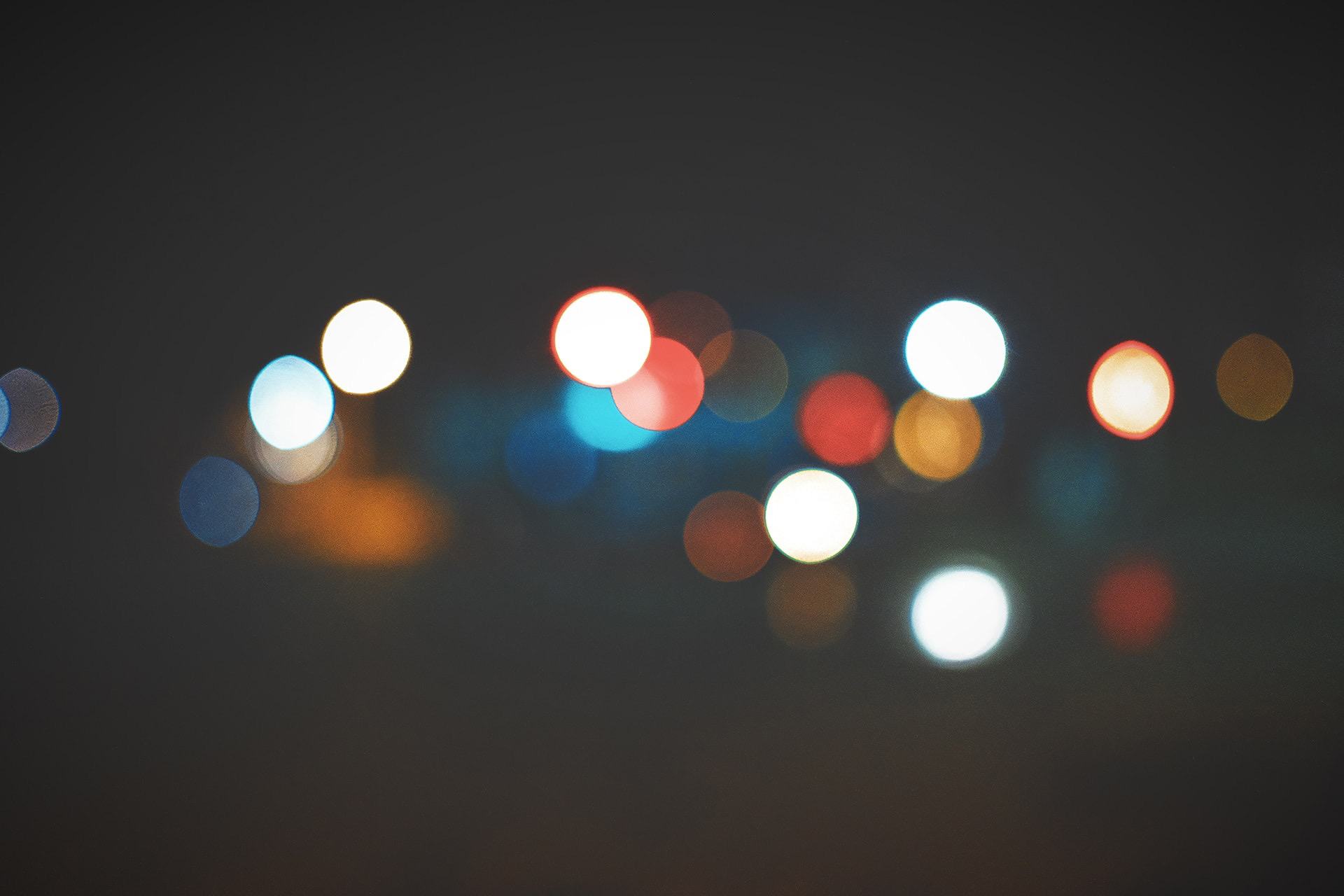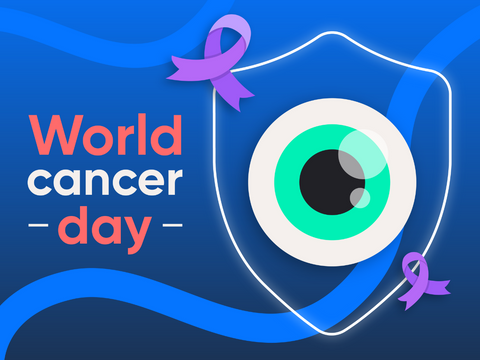We live in a technologically advanced age where the presence of artificial light and devices like smartphones and laptops means that we are sleeping less than any other previous generation. The sun no longer dictates our schedules and we are now free to work or socialise even in the dead of the night.
Unfortunately, most of these devices emit blue light which is now raising a lot of concerns as a potential public health risk. Studies have even shown a direct correlation between blue light and increased risk of some types of cancer. But before we get there, here’s what you need to know about blue light.

Blue Light Spectrum Diagram
How do LED lights produce blue light?
The visible light spectrum is composed of various shades of red, yellow, green and blue light rays that combine to form white light. The colours of the spectrum differ considerably in their wavelengths and the amount of energy they contain.
On one end of the spectrum, red light has the longest wavelength and therefore the least amount of energy while blue light has the shortest wavelength and contains the highest amount of energy.
Furthermore, blue light on its own makes up a third of all visible light. These facts are what make blue light the most important and widely studied component of the light spectrum.
Due to its high energy content, blue light is able to easily penetrate into the deeper tissues of the eye, a fact that allows this light to directly damage the retina in high intensities. Incidentally, exposure to blue light does have some merits, especially during the day since it keeps you alert and boosts your memory and cognitive function.
It’s also the part of light that allows you to see with the highest visual acuity. The problem comes in when you’re exposed to blue light at night.
Blue light is able to stimulate photosensitive receptors in the eye that signal your body to suppress the secretion of melatonin, a sleep hormone. Reduced melatonin at night causes insomnia and disrupts your circadian rhythm.

The study pointing to LED lights can lead to cancer
Research from the Barcelona Institute for Global Health, published in the Environmental Health Perspectives in 2018, has found that LED lighting contributes to the risk of cancer.
The results clearly showed a link between blue light exposure at night and a higher risk of developing breast and prostate cancer. The researchers compiled medical and epidemiological data of more than 4000 people between 20 and 85 years old from 11 regions in Spain.
Exposure to artificial light indoors was determined through personal questionnaires while exposure outdoors was measured in Madrid and Barcelona using images taken from astronauts aboard the International Space Station. The researchers then compared previous exposure to artificial light at night between approximately 2000 breast or cancer patients and about 2000 controls based in Madrid and Barcelona.
You can give your body a helping hand at night with the use of blue light blocking glasses, such as these.
The results obtained clearly showed that participants who were exposed to higher levels of outdoor blue light at night had a 1.5 and 2-fold higher risk of developing breast and prostate cancer respectively.
Exposure to indoor artificial light also showed marked effects especially regarding the risk for developing prostate cancer. Men who slept in ‘quite illuminated’ bedrooms reported a 2.8-fold higher risk of developing prostate cancer than those who reported sleeping in total darkness.
So the evidence is clear that light disrupts our health.
With these being conducted a few years ago now, what has changed since?

A unique thing about the study was that it was able to specifically look at the intensity of blue light. Previous studies that used satellites only assessed the overall intensity of artificial light in large cities at night. “In this study, we focused on the satellite images because other satellites cannot see the colours but astronauts aboard the space station can,” said Dr Alejandro Sánchez de Miguel, a researcher from the University of Exeter and a lead author on the study. “And so this is the first study to put an experimental value on the correlation between blue light and the general population with the risk of breast cancer and prostate cancer.
According to the study, only outdoor artificial light that was high in blue light showed a direct correlation with an increased risk of cancer. Other kinds of outdoor artificial light like those rich in the red and green components of the visible light spectrum showed no similar effect.
This is an important discovery that clearly proves that only blue light is responsible for cancer rather than the general brightness of outdoor artificial lighting. It’s certainly a worrying prospect considering the new trend of major cities switching to LED street lights that emit a lot of blue light.
So what is it about blue light that increases the risk of breast and prostate cancer? It all boils down to the effect on melatonin and the circadian rhythm. As previously stated, blue light at night suppresses the production of melatonin which ultimately disrupts your biological clock.
Other than controlling your sleep-wake cycle, your biological clock maintains the efficient working and synchronisation of all of your physiological functions; which includes hormone production.
Interfering with the circadian rhythm, therefore, disturbs the hormone levels in your body which is a significant risk factor for hormone-sensitive cancers like breast and prostate cancer.
Melatonin on its own also has anti-oxidant and anti-inflammatory properties which help suppress the development of cancers when at adequate levels. The suppressive action of blue light on melatonin thus abolishes these effects. What can you do about blue light from LED's to prevent cancer?
Even though the study only focuses on blue light emitted by outdoor artificial light sources, blue light is also emitted by smartphones and laptops. The researchers warn that the same mechanism may be affecting the devices and bulbs at home because ultimately, the physiology is the same.
With this in mind, it's important to take appropriate measures to reduce your exposure to blue light at night from your devices and artificial lighting. To get you started, visit our product page for LED lighting with special anti blue light properties.
More recent studies have delved into the relationships between the correlations and predictability between women who use devices which emit blue light and the likelihood of breast cancer. In fact the researchers were using data to train machine learning to assist in early detection of this disease, so they can help save more lives.
Another recent study explored the occurences of childhood acute lymphoblastic leukemia, in conjunction with artifiical light and air pollution.
This study was particularly eye opening to read.
Latsly it's worth mentioning a study published late last year, in 2022, which looked into the effects of circadian disruption and how it impacted the inflammatory response within the body.
With cancer being closely tied to inflammation and other markers, we should pay close attention to any insights or markers we're able to track.
As always stay safe!
Thanks for taking the time out to read through this article, we do hope it was useful and shone a light into all things cancer related.
Resources and further reading:
Zhong C, Wang R, Morimoto LM, Longcore T, Franklin M, Rogne T, Metayer C, Wiemels JL, Ma X. Outdoor artificial light at night, air pollution, and risk of childhood acute lymphoblastic leukemia in the California Linkage Study of Early-Onset Cancers. Sci Rep. 2023 Jan 11;13(1):583. doi: 10.1038/s41598-022-23682-z. PMID: 36631468; PMCID: PMC9834257.
Jerigova V, Zeman M, Okuliarova M. Circadian Disruption and Consequences on Innate Immunity and Inflammatory Response. Int J Mol Sci. 2022 Nov 8;23(22):13722. doi: 10.3390/ijms232213722. PMID: 36430199; PMCID: PMC9690954.
Mortazavi SAR, Tahmasebi S, Parsaei H, Taleie A, Faraz M, Rezaianzadeh A, Zamani A, Zamani A, Mortazavi SMJ. Machine Learning Models for Predicting Breast Cancer Risk in Women Exposed to Blue Light from Digital Screens. J Biomed Phys Eng. 2022 Dec 1;12(6):637-644. doi: 10.31661/jbpe.v0i0.2105-1341. PMID: 36569561; PMCID: PMC9759638.
Garcia-Saenz A, Sánchez de Miguel A, Espinosa A, Valentin A, Aragonés N, Llorca J, Amiano P, Martín Sánchez V, Guevara M, Capelo R, Tardón A, Peiró-Perez R, Jiménez-Moleón JJ, Roca-Barceló A, Pérez-Gómez B, Dierssen-Sotos T, Fernández-Villa T, Moreno-Iribas C, Moreno V, García-Pérez J, Castaño-Vinyals G, Pollán M, Aubé M, Kogevinas M. Evaluating the Association between Artificial Light-at-Night Exposure and Breast and Prostate Cancer Risk in Spain (MCC-Spain Study). Environ Health Perspect. 2018 Apr 23;126(4):047011. doi: 10.1289/EHP1837. PMID: 29687979; PMCID: PMC6071739.
How we reviewed this article:
Ocushield has strict sourcing guidelines and relies on peer-reviewed studies, academic research institutions, and medical associations.
- Machine Learning Models for Predicting Breast Cancer Risk in Women Exposed to Blue Light from Digital Screen www.ncbi.nlm.nih.gov/pmc/articles/PMC9759638/
- Circadian Disruption and Consequences on Innate Immunity and Inflammatory Response pubmed.ncbi.nlm.nih.gov/36430199/
- Outdoor artificial light at night, air pollution, and risk of childhood acute lymphoblastic leukemia in the California Linkage Study of Early-Onset Cancers pubmed.ncbi.nlm.nih.gov/36631468/
- Evaluating the Association between Artificial Light-at-Night Exposure and Breast and Prostate Cancer Risk in Spain (MCC-Spain Study) ehp.niehs.nih.gov/doi/10.1289/ehp1837
Our experts continually monitor the health and wellness space, and we update our articles when new information becomes available.
Written By
Dhruvin Patel | BSc Hons, MCOptom, Optometrist
Edited By
Omba Kumwenda | BA, MEng
Medically Reviewed By
Asad Hamir | BSc Hons, Optometrist
Copy Edited By
Tara Tadlock | MA


I hate cancer
Leave a comment